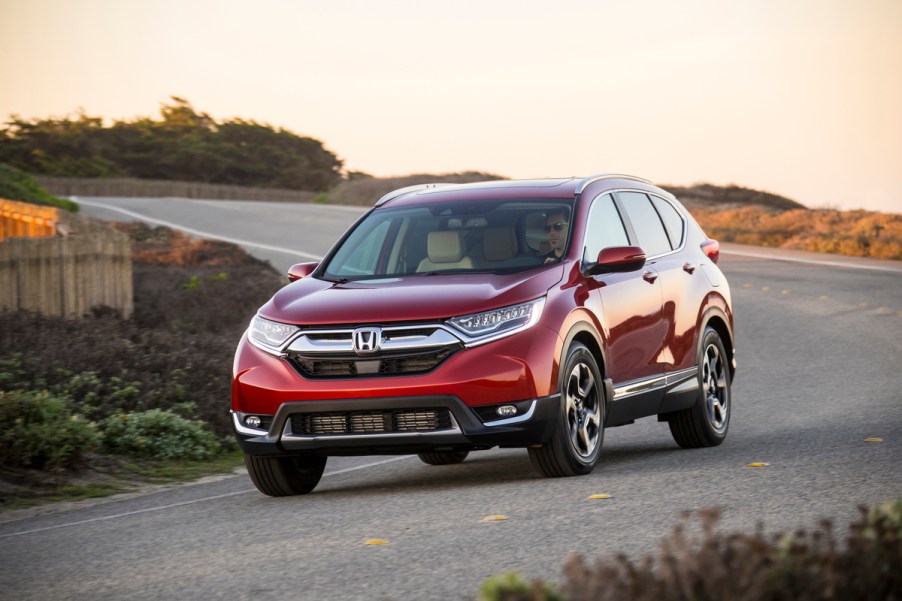
How Safe Is the Honda CR-V?
One of the biggest things that consumers keep in mind when shopping for a new vehicle is safety. Thankfully, there are resources aimed at getting you the right information to help you make your decision. The National Highway Traffic Safety Administration and the Insurance Institute for Highway Safety are two organizations that test and rate vehicles for safety and publish the results to the public.
Today, let’s take a look at the Honda CR-V. The CR-V is Honda’s midsize SUV option and the exciting news for 2020 is that they’ll soon be offering a hybrid model. But, again, consumers really need to know about how it holds up safety-wise. Let’s take a look.
The Honda CR-V’s top safety features

New Honda vehicles, including the CR-V, come standard with the Honda Sensing Suite, which includes a number of the latest safety features. This includes Collision Mitigation Braking, which helps you by automatically stopping your vehicle when the systems determine that a frontal collision is imminent. This gives you an extra second or two of braking, in a situation where every second counts.
Road Departure Mitigation is also included in the Honda Sensing Suite. This system gives you an alert when you drift out of your lane without signaling, allowing you to adjust back into your own lane without causing another vehicle to have to swerve to avoid you. This system can also provide steering assistance and braking assistance if it senses you leaving the road entirely.
Adaptive Cruise Control is another feature included in the Honda CR-V. This allows you to choose the speed at which you’d like to program your cruise control, then adjusts it automatically if it senses you approaching too close to the vehicle in front of you. It returns to your pre-set speed if you change lanes.
The NHTSA’s reviews of the Honda CR-V
While the NHTSA hasn’t yet reviewed the 2020 CR-V, it gave the 2019 model a five-star overall safety rating. The utilize crash tests to give their overall safety score. This includes a front crash, side crash, and the probability of a rollover.
The 2019 CR-V scored five stars in the frontal crash test, which simulates a crash between two drivers heading toward each other at 35 mph. It also scored five stars in the side crash test, which combines both a side barrier crash and a side pole crash, both of which are common types of car accidents. Finally, it scored four stars for its risk of rollover in a loss-of-control scenario where the vehicle may tip over or roll completely.
The IIHS’s reviews of the Honda CR-V
The IIHS has done a review of the latest 2020 Honda CR-V, and the results are similar to that of the 2019 model. Their crash tests are extremely similar to the ones that the NHTSA performs, and the IIHS got the same results for the 2020 CR-V. It handled well in safety during the frontal crash for both passenger and driver, as well as the side crash test. The IIHS’s website even includes photos and videos from the crash test demonstrations, so you are able to see in real time what a crash would be like.
The only areas where the CR-V scored slightly low is the headlights, which were found to give inadequate lighting while driving on a curved road, and in the child seat anchors, which were found to be difficult to locate. While the child seat anchors likely don’t affect everyone looking to purchase a new CR-V, consumers should be wary of how their headlights reach while driving on curves.


